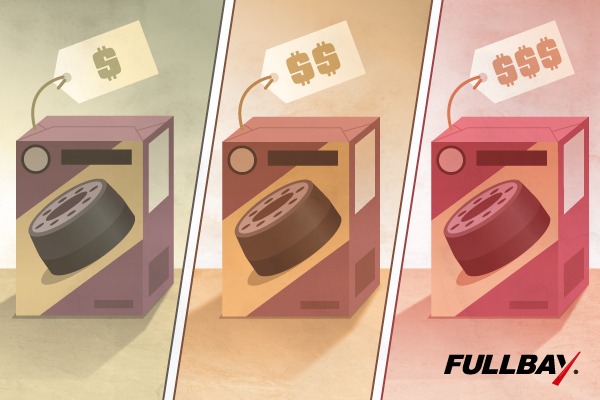Marking It Up

Heavy-duty repair shops have two goals: to offer a valuable service and to make a profit.
Newflash: If your shop doesn’t achieve the latter, it won’t be open long enough to provide the former.
We can hear you now: Whoa, Fullbay, that’s intense.
Okay. Let’s back up a little bit and explain ourselves.
A mistake many shop owners make is the way they price parts. Some got used to a simple percentage markup structure long ago and have never bothered to make a change. Others may feel that their profits should come from the service they perform, so they basically pass on the cost straight across with no parts markup.
If you’re the shop in either of these scenarios, you’re leaving profits on the table.
A fresh parts markup strategy is how you can resuscitate your anemic bottom line and take your repair shop from surviving to thriving.
Parts Cost Money
There’s a reason that simply marking up parts by a percentage – 50%, for instance – doesn’t often result in healthy profits. It’s because that basic formula doesn’t account for the hidden costs the part carries.
Also known as burden rate or overhead, those costs include everything involved in ordering the part. They’re things such as time, a computer, Internet connection, electricity, and a phone. If your shop keeps parts stocked, there’s also the cost of space to store them until they’re needed. Plus, don’t forget other overhead costs like:
- Insurance
- Theft
- Unused, outdated parts that you’ll have to replace (with other parts that carry their own burden rate)
For example, a part the vendor charges $100 for could end up costing $120 or more after your parts manager orders it and stocks it on the shelf.
Parts Markup Strategies
Don’t take a hit-and-miss approach to profits. Put together some parts markup strategies and find the one that works for you.
For instance, you could aim to make a certain percentage in profit. In general, heavy-duty repair shops should make around 45% in profits on parts, so you can base your parts markup on a 45% profit margin.
You can also go with volume-based pricing. For that strategy, you take a higher markup on slow-moving inventory than on parts with high turnover. Another approach is to charge more markup on low-priced items. For example, a bolt or bracket might only cost you 50 cents, but not many people know what small, low-priced parts like those cost – and they typically don’t care. You’ll find customers are more concerned with big-ticket items than haggling over parts that cost a few dollars. That means you can easily charge $2.50 for that .50-cent part, which translates into an 80% profit margin.
Calculating Parts Markup
Once you know how much you want to make, work backward from there to determine a profitable parts markup.
Here’s a formula for calculating a parts markup that will return a 45% profit:
Full cost of the part / (100-target profit margin)100 = what you charge for the part
If you have a target profit margin of 45%, you would divide the full cost of the part by 100-45 (which is 55), then multiply that answer by 100.
Plugging in our $100 part example ($120 fully burdened) gets us a parts markup of $98.18:
$120/55×100=$218.18
You can use different percentages for the target profit margin if you decide not to mark up all parts the same. Applying this equation to each part you sell will guarantee a consistent profit. Plus, it keeps your shop competitive while ensuring you don’t get a reputation for over-charging.
Of course, doing the math every time you create an estimate or invoice can turn into something of a time-suck. Although it’s essential to understand how effective parts pricing works, we’ve created a tool that will handle the heavy mathematical lifting for you. Scroll down a little bit to play around with the Parts Markup Tool and get a feel for how it works. It’ll show you what you need to charge to make a certain amount off each part – and better yet, it lets you experiment with different prices and percentages without actually having to experiment on your inventory.
By the way, the Parts Markup Tool is one small piece of Fullbay. Want to see what else shop management software designed for heavy-duty shops can do for you? Give our demo a whirl and find out!

